Love for sweets is inherent in human nature. Therefore, the child also needs sweets: this is what children's nutritionists say, the same parental experience tells us. The whole question is how many sweets a baby needs for full development, how old they should be given to them, what they should be, so as not to harm the children's body.

There are two parent camps: some are categorically against giving sweets to children under 3 years old, while others do not see anything bad in the afternoon chocolate. Nevertheless, both of them make mistakes in building the relationship “sweets - child”. What kind? We sort it out together.
How a child meets sweet
The child begins to get acquainted with the variety of food products precisely from those products that contain sugar. The first sweet dish in the baby’s diet is breast milk containing lactose. But even if the child is on artificial feeding, then the same lactose is always added to infant formula. In addition to it, another product containing milk sugar is added to baby food - maltose.
During the first year of life, the baby usually gets acquainted with other sweet foods. When a child begins to be fed, he is usually given juices and berry purees containing natural sugar. Here, by the way, parental errors are possible.
Some mothers add sugar to cereals and mashed vegetables. In no case can this be done, otherwise the child may have a perverse taste sensation, he will refuse unsweetened food, which in the future will almost certainly lead to overweight and various diseases.
Another parental mistake is to add sugar to the water that the child is given to drink. Or tea. Doing this is not advisable. It is better to give the baby unsweetened water or tea so that he does not have an unnecessary habit of sweet dishes.
A child from a year to three: what can he do from sweets
When the baby turns one year old, he can already be given more sweet. For example, in those dishes, where appropriate, you can add a little sugar.
It is useful to water the baby with compotes and decoctions of dried fruits without adding sugar to them. It is useful to start feeding a baby berry or fruit mousse.
In addition, marmalade, marshmallow and marshmallow are gradually introduced into the diet. If you want to give your baby exactly marshmallows, it is better if it is creamy or vanilla. It is undesirable to give fruit marshmallows to children.They contain many dyes and other additives. For the same reason, it is better to refrain from hard varieties of marmalade: children are not able to chew them and swallow whole.
After the child is 2 years old, you can begin to gradually feed him with jams and preserves. They contain dietary fiber, iron and potassium, which are much healthier than sugar. The baby should not give jam or jam in its pure form, it is better to add these products to a little porridge or as an addition to tea. As for sweet carbonated drinks, they are strictly contraindicated for children.
It is important to know how much sugar a baby can consume per day. Children's nutritionists argue that the daily sugar norm for a baby aged 1-3 years should not be more than 40 grams. It is clear that such a norm is to some extent arbitrary and is determined, as they say, “by eye”, however, parents must constantly keep it in mind. Chocolate and cocoa are very harmful to the child. Chocolate candies, marshmallows with the addition of chocolate, and other goodies that contain this product will also be harmful. Due to the high fat content in chocolate, the normal functioning of the stomach and pancreas may be disrupted in a child.
[sc name = ”rsa”]
Sweets after 3 years of age
Starting from the age of 3, the child is gradually introduced to other sweets, bearing in mind that consuming more sugar per day is harmful for the baby. Little by little, gingerbread, cookies and jam, honey can be added to the diet. If the baby is okay with the stomach, then you can treat him to chocolate. It is better to start with white and dairy varieties, and after 5 years - give other varieties.
Many children's nutritionists and parents are convinced that dried fruits are much healthier than the same sweets. And they are right: in dried fruits there are a lot of vitamins, dietary fiber, trace elements, protein. All this is very useful for a growing child’s body. Therefore, it will be wonderful if parents manage to dissuade the child from sweets, completely replacing them with dried fruits.
As for flour sweets, then parents should be wary of them. For the manufacture of cookies, gingerbread, waffles, pastries, cakes is flour of the highest grades with the addition of a large amount of fat and sugar. Accordingly, such products have a high calorie content, but on the contrary, there are very few useful vitamins, proteins, minerals and other useful substances there. Cream cakes and cakes are especially harmful for the child’s body: they contribute to the development of microbes in the child’s body, and therefore the baby can get sick or poison.
Separately, it should be said about honey. Its healing properties are well known. However, a lot of honey in the diet of preschool children can be harmful due to the fact that it can cause an allergy in a child. Until the baby is 3 years old, giving him honey is generally not recommended. Upon reaching the age of three, honey is added to some children's dishes, but not more than one teaspoon per day.
The beneficial properties of sugar
Sugar is a very important product for human life. Here are some of its most valuable properties:
- Thanks to sugar, immunity increases, and, in addition, a cold is well treated;
- It adds vigor to a person, helps to restore strength and increase efficiency;
- Thanks to sugar, mood and sleep are improved;
- Sugar can reduce pain; in addition, it helps eliminate spasms;
- When using foods containing sugar, the risk of liver disease is reduced, since this product is able to remove toxins from the liver;
- It is an excellent stimulant of brain activity and reduces appetite.
It should be borne in mind that all these beneficial qualities are manifested only when sugar is not abused. In case of abuse, harm is done instead of benefit.
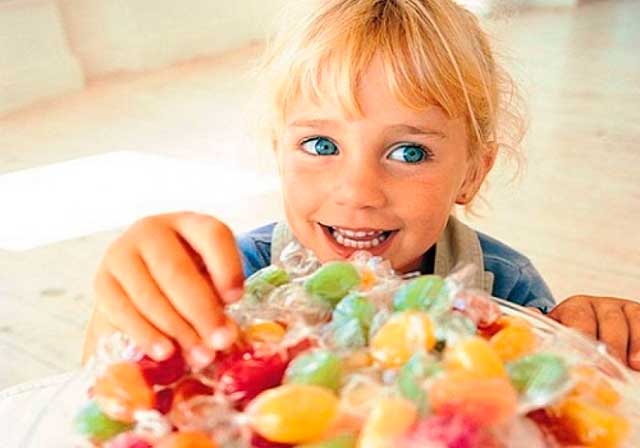
More on the Dangers of Excessive Sugar
However, if there is too much sugar, this is harmful for the child:
- Excess sweets leads to the fact that the baby's appetite is reduced. A child overfed with sweets is unlikely to eat porridge or soup. As a result, he will not receive the necessary substances for the normal development of the body: trace elements, acids, proteins, vitamins;
- Children who consume excessive amounts of sweet treats develop tooth decay very quickly. Especially dangerous in this regard are iris and candy;
- Due to the large number of sweets in the child’s body, the correct metabolic process is disrupted, which causes heartburn, nausea, stomach pain;
- Sweet tooth children develop obesity and overweight. Because of this, disturbances in the functioning of the central nervous system can occur, immunity can decrease, diabetes can develop, and interruptions in the work of the cardiovascular system can begin. Obesity affects the children's psyche, which, in turn, can lead to depression.
Common Parental Mistakes
Responsibility for the wise use of sugar lies largely with the parents. If mom and dad explain to children that a lot of sweets are harmful, then they themselves should not eat cakes with gingerbread, but cereal and soup. Otherwise, the child may suspect parents of hypocrisy. And then the well-known principle “the more forbidden - the sweeter” will work. In other words, children will begin to spite parents secretly overeat with all kinds of sweets, as a result of which they may develop diseases of the stomach, liver, pancreas, metabolic disorders.
Here are some mistakes made by mothers and fathers (and grandparents at the same time) regarding children and sweets:
- Sweetie as a reward. It often happens that a child is promised some kind of sweetness in exchange for the action or inaction on the part of the child necessary for mom, dad, grandparents. “If you clean the room, you get a chocolate bar”, “Stop being naughty - I will give you a gingerbread”, “Tell a rhyme - I will buy a cake”. Such words can be heard all the time. The mistake here is that the child will receive sweets much more than he needs for normal development. In addition, very soon, the baby will understand its own benefits, and will begin to demand a sweet reward from parents literally for each of their actions. And this will certainly develop the egoistic character traits in the kid;
- Complete ban on sweets. This is the opposite parent extreme and, accordingly, a mistake. A reasonable amount of sweet for the baby is good. Moreover, it is hardly possible to implement such a ban in practical terms. A child can be treated to sweets by a grandmother or a kind aunt, other children in kindergarten or on the street, etc. As a result, the kid can think about why others treat him with sweets, and mom and dad forbid that it could result in an open conflict between child and parents;
- Allowing you to eat sweets as much as your child wants. This is perhaps the most dangerous parental mistake. At first, probably, a happy child will really "eat as much as he wants," but only until he gets sick, parents should strictly control the amount of goodies eaten by the baby and explain what harm sweets can cause;
- The belief that only candies can be harmful. However, sugar, as you know, is found not only in sweets, but also in other confectionery products, as well as in fruits, pastries, soda, etc. Therefore, parents are required to monitor not only sweets, but also other sweets that they ate or just about to eat a baby.
Is there a substitute for sugar?
Despite the fact that sugar is reasonable for children, it is advisable not to offer it to a child in its pure form. It will be better if instead of sugar the baby begins to use its substitutes. There are many such substitutes. Most of them are much safer for the baby's health than sugar.
Here is a list of them:
- Eastern sweets: kozinaki, Turkish delight, halva;
- Pastille of all kinds;
- Oat and unleavened grades of cookies;
- White marshmallows;
- Various dried fruits, especially raisins, dried apricots, prunes, dates, apples;
- Natural jams, preserves, juices, compotes;
- Chocolate;
- Honey.
All of these foods contain fructose and glucose, which play the same role in the body as sugar. By the way, table sugar can be replaced with cane sugar. Cane sugar is much more beneficial for a child. It has many times less heavy carbohydrates compared to regular sugar: for this reason, it is easier to digest and promotes proper digestion. Cane sugar, unlike table sugar, contains many useful elements and minerals: calcium, potassium, iron, magnesium, phosphorus.
A separate answer requires the question of whether it is harmful to give sweets to children with diabetes or allergies. In this case, medical consultation is necessary. The pediatrician will determine how to treat the child and explain what kind of sweets and in what quantity are permissible. However, even before consulting a doctor, one should know that such children should in no way be allowed chocolate and other confectionery products containing chocolate. Children's doctors warn that with allergies and diabetes, all kinds of candies and caramels are especially harmful.
We also read:
- When can a child begin to give sweets?
- The opinion of mothers: is it possible and necessary for a child up to 3 years old to give salt and sugar. + Consultation of Dr. Komarovsky and Professor of Pediatrics Sergey Nyankovsky
Dr. Komarovsky: At what age can children eat sweets?
Dr. Komarovsky will answer the question of how old and why children can eat sweets and what types are preferred:
Union of Pediatricians of Russia: How much sweet can a child eat? Parent Tips

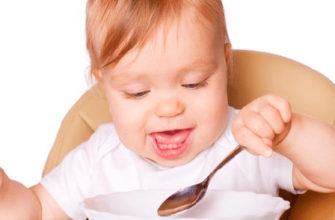

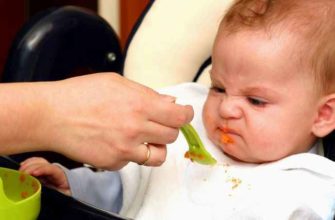

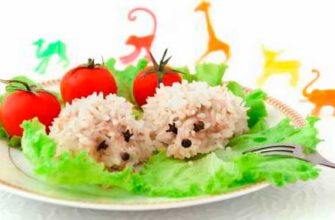


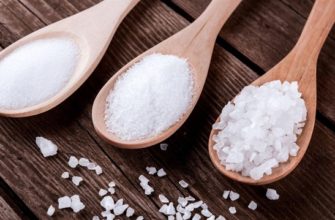
Unfortunately, the desire to feed their child, who eats poorly, and leads to the fact that mothers begin to add sugar to porridge and promise sweetie, if they eat soup. So imperceptibly, my son was accustomed to chocolate and the pancreas was disrupted.